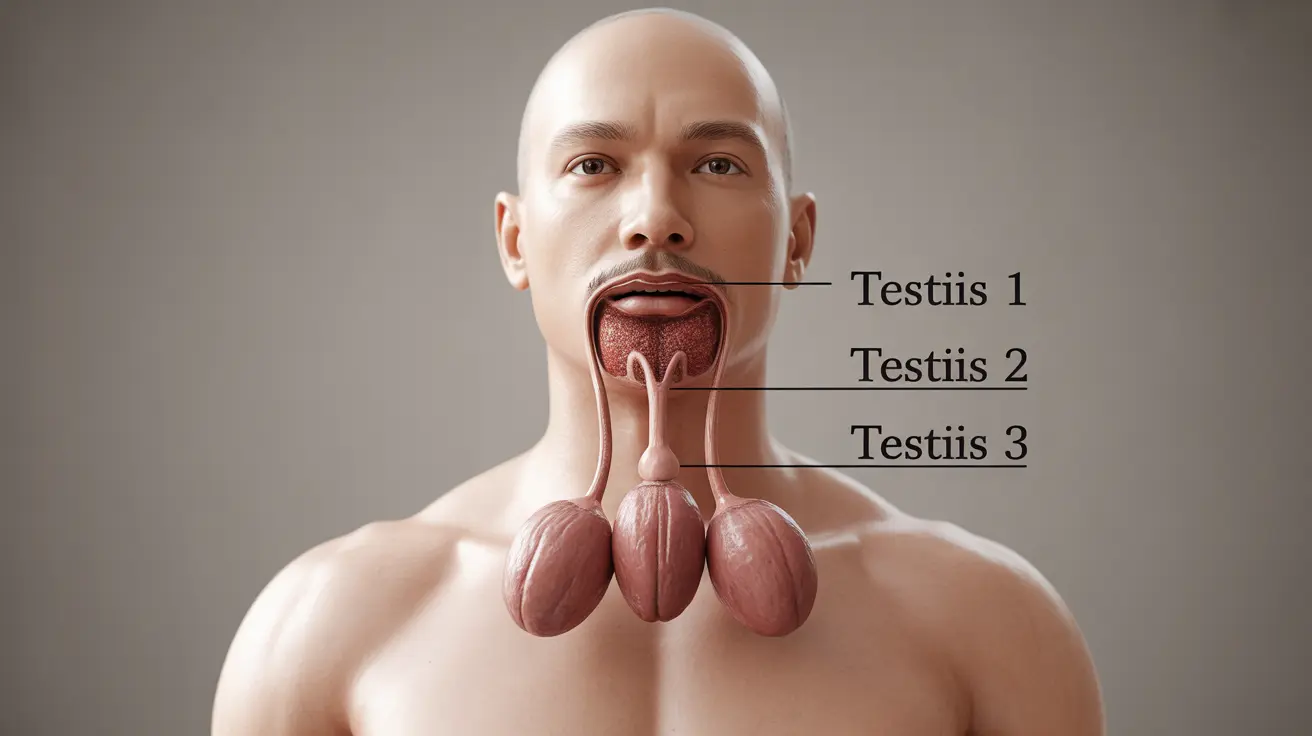Polyorchidism is a rare congenital condition where a person is born with three testicles instead of the typical two. This unusual anatomical variation affects approximately 1 in 1 million males, making it one of the rarest conditions in male reproductive health. Understanding this condition is crucial for those affected and medical professionals who diagnose and treat it.
While having three testicles might sound alarming, many individuals with polyorchidism lead normal, healthy lives. However, proper medical evaluation and monitoring are essential to ensure optimal reproductive health and prevent potential complications.
Understanding Polyorchidism and Its Causes
Polyorchidism typically develops during embryonic development when the genital ridge, which forms the reproductive organs, divides abnormally. This division results in the formation of an additional testicle, which can vary in size and functionality compared to the other two testicles.
The extra testicle most commonly appears on the left side of the scrotum, though it can occur on either side. In some cases, the additional testicle may be located within the abdominal cavity or along the path where testicles typically descend during fetal development.
Diagnosis and Detection
Many cases of polyorchidism are discovered incidentally during routine physical examinations or while investigating other medical conditions. Medical professionals typically use several methods to confirm the diagnosis:
- Ultrasound imaging
- MRI scans
- Physical examination
- Hormone level testing
These diagnostic tools help determine the size, location, and functionality of all three testicles, which is crucial for developing an appropriate management plan.
Impact on Reproductive Health
The presence of three testicles can have varying effects on reproductive health, depending on the development and functionality of the additional testicle. Some individuals with polyorchidism maintain normal fertility, while others may experience:
- Changes in hormone production
- Variations in sperm production
- Potential impact on reproductive function
Regular monitoring of reproductive health markers is essential for individuals with this condition to ensure optimal function and address any concerns promptly.
Management and Treatment Options
The management approach for polyorchidism varies based on individual circumstances and potential complications. Treatment options typically fall into two categories:
Conservative Management
For cases without complications, doctors may recommend:
- Regular monitoring through ultrasound
- Periodic physical examinations
- Hormone level testing
- Fertility assessments when relevant
Surgical Intervention
Surgery might be necessary in situations involving:
- Risk of testicular torsion
- Presence of masses or tumors
- Chronic pain or discomfort
- Complications affecting daily life
Frequently Asked Questions
What are the symptoms and signs of polyorchidism, and how is it typically diagnosed?
Polyorchidism often presents with no obvious symptoms beyond the presence of an extra testicle. Diagnosis typically involves physical examination, ultrasound imaging, and MRI scans to confirm the presence and characteristics of the additional testicle.
How does having three testicles affect fertility and reproductive health in men?
The impact on fertility varies among individuals. While many men with polyorchidism maintain normal fertility, some may experience altered hormone levels or sperm production. Regular monitoring and assessment by healthcare providers can help manage any potential effects on reproductive health.
What are the risks of testicular cancer associated with polyorchidism, and how is it managed?
Men with polyorchidism may have a slightly increased risk of testicular cancer. Regular monitoring through self-examination and medical check-ups is essential for early detection. Some doctors recommend preventive removal of the supernumerary testicle if it shows any concerning changes.
What are the common complications of polyorchidism, and how are they treated?
Common complications include testicular torsion, pain, and potential developmental issues. Treatment depends on the specific complication and may range from conservative management to surgical intervention when necessary.
What are the non-surgical options for managing polyorchidism, and when might surgery be required?
Non-surgical management typically involves regular monitoring through imaging studies and physical examinations. Surgery may be recommended if complications arise, such as pain, torsion, or suspicious masses, or if the extra testicle poses a risk to health.




